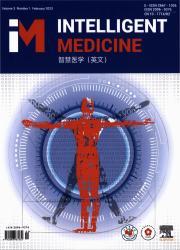可用性视角下临床外科设计数字界面的迭代与评价
IF 6.9
Q1 COMPUTER SCIENCE, INTERDISCIPLINARY APPLICATIONS
引用次数: 0
摘要
目的基于数字化医疗技术的发展背景,建立相关领域的设计指南和参考,利用智能技术更好地服务于临床医疗,增强机器人手术系统交互界面的可用性,降低数字化手术过程中潜在的人为因素风险。方法以机器人肝癌消融手术系统为研究对象,基于可用性理论,从有效性、效率、满意度三个维度建立主客观评价指标。采用分层任务分析法,进行可用性实验,收集相关数据。通过观察和访谈,对实验过程中出现的问题进行反馈。采用故障模式及影响分析和故障树分析来评估风险水平,制定设计策略。结果对肝癌消融手术机器人的界面设计进行了迭代优化。结果表明,迭代后的界面在熟练操作时间、主观评价分数、风险优先级数值、风险等级等方面均有提高。验证了方案的合理性,构建了基于智能技术的界面设计范式。结论改进设计后的界面有效降低了出现问题的频率和平均熟练操作时间,从而提高了用户的主观满意度。本文章由计算机程序翻译,如有差异,请以英文原文为准。
Iteration and evaluation of digital interface for clinical surgery design from the usability perspective
Objective Based on the development background of digital medical technology, this study aimed to establish design guidelines and references in relevant fields to better serve clinical medical treatment using intelligent technology to enhance the usability of the interaction interface of robotic surgical systems and reduce potential human-factor risks during digital surgery.
Methods Considering the robotic liver cancer ablation surgery system as the research object, subjective and objective evaluation indicators were established from 3 dimensions of effectiveness, efficiency, and satisfaction based on the usability theory. Using the hierarchical task analysis method, usability experiments were conducted to collect relevant data. Feedback on issues during the experimental process was obtained through observation and interviews. Failure mode and effect analysis and fault tree analysis were used to assess risk levels and formulate design strategies.
Results The interface design of the liver cancer ablation surgery robot was iteratively optimized. The results showed that the interface after iteration improved in skilled operation time, subjective evaluation scores, risk priority number value, and risk level. The rationality of the scheme was verified, and interface design paradigm was constructed based on intelligent technology.
Conclusion After improving the design, the interface effectively reduced the frequency of problems and average skilled operation time, thereby, improving the subjective satisfaction score of users.
求助全文
通过发布文献求助,成功后即可免费获取论文全文。
去求助
来源期刊

Intelligent medicine
Surgery, Radiology and Imaging, Artificial Intelligence, Biomedical Engineering
CiteScore
5.20
自引率
0.00%
发文量
19
 求助内容:
求助内容: 应助结果提醒方式:
应助结果提醒方式:


